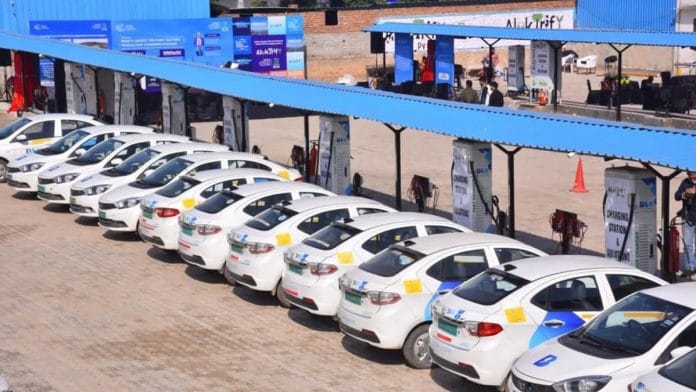New Delhi: Market opportunities worth $12.9 trillion are expected from the sales of Electric Vehicles (EVs) from 2020 to 2070, according to a new report by Singapore-based research firm Climate and Sustainability Initiative (CSI).
Market opportunities, according to the report, include the revenue raised by the original equipment manufacturers (OEMs) on EV sales, the taxes collected by the government, and the dealers’ margins.
Released on 7 August, the CSI report estimated the investments required in the auto sector for India to achieve net zero emissions by 2070. The report also estimated the revenue and taxes the transition will generate by analysing current sales and market prices for EVs and the investment benchmarks for new EV technologies.
India’s automobile industry contributed to 13% of total emissions in 2016 — the third-highest contribution — while the highest was by the power sector, followed by industries.
Emphasising the industry is crucial to net zero transition, the report said consumers and OEMs must adopt EVs to facilitate the decarbonisation of the auto industry.
For India to reach net zero by 2070, the automobile sector will have to increase annual investment in EV technologies — from $7 billion in 2025 to $70 billion by 2070, with a cumulative investment of over $323 billion needed over the next 50 years, said the report. More than $200 billion will go into EV four-wheelers, while $45 billion will go into EV trucks.
The report also said the initial investment requirement in EVs is higher, so one can assume that the investments in the automobile sector will grow at the rate of 2.5% per year from 2025 to 2040 and then decrease by 1.2% per year until 2070.
“We have basically charted the India story — for investors, OEMs, policymakers and regulators. This report looks at the scale of decarbonisation of India’s automobile sector and what this transition can possibly offer in the next 20 years,” said Vaibhav Singh, the CSI executive director and report co-author, speaking to ThePrint.
EV loans & green lines of credit
The report estimated market opportunities worth $19.7 trillion in automobile sales from 2025-70 and that $15.5 trillion of it is expected in car sales, indicating the high demand for four-wheelers in India by 2070.
Report authors Vaibhav Singh and Priyadarshini Alok envisioned that two-wheeler sales would decline after 2050 and three-wheeler sales after 2025. On the other hand, four-wheeler sales in the electric and other vehicles category will likely increase after 2050, going from 61 million units to 133 million units by 2070.
The analysis of the tax collections from EVs considered two scenarios. Currently, the GST on conventional internal combustion engine (ICE) vehicles is 28% and EVs 5%. The report found that if the GST for EVs becomes the same as for ICE vehicles, i.e. 28%, the total tax collection opportunity is $2.8 trillion by 2070. However, if the GST remains 5% for EVs, the government will collect $502 billion in taxes.
The report also discussed how people and businesses require proper financing to purchase EVs — which requires changes in the auto loan portfolios of the banking sector.
“We need to keep in mind — how to make the EV transition accessible to the common man. Why would they buy an EV unless it is affordable or the loans are on better terms?” said Singh while presenting the report.
EVs have low operating costs but higher upfront costs compared to conventional vehicles. However, the main barrier to finance lies in loan companies not yet “attuned to EV operations”. So, EV loans are for shorter terms and have higher interest rates than conventional auto loans.
The report suggested options such as the first-loss guarantees for EV loans, i.e., a risk-sharing option between banks and other financial institutions like the government to absorb the risks of the first loss/setback in any loan the bank gives. That would help encourage automobile financiers to provide people and businesses more loans for EVs. Other suggestions by the report included green lines of credit, considering that EV loans have specific environmental impact targets and will help ensure those have better terms for consumers.
(Edited by Madhurita Goswami)
Also read: Only 2.56% of 10,000 MW decentralised solar power target achieved under PM-KUSUM in 5 years






